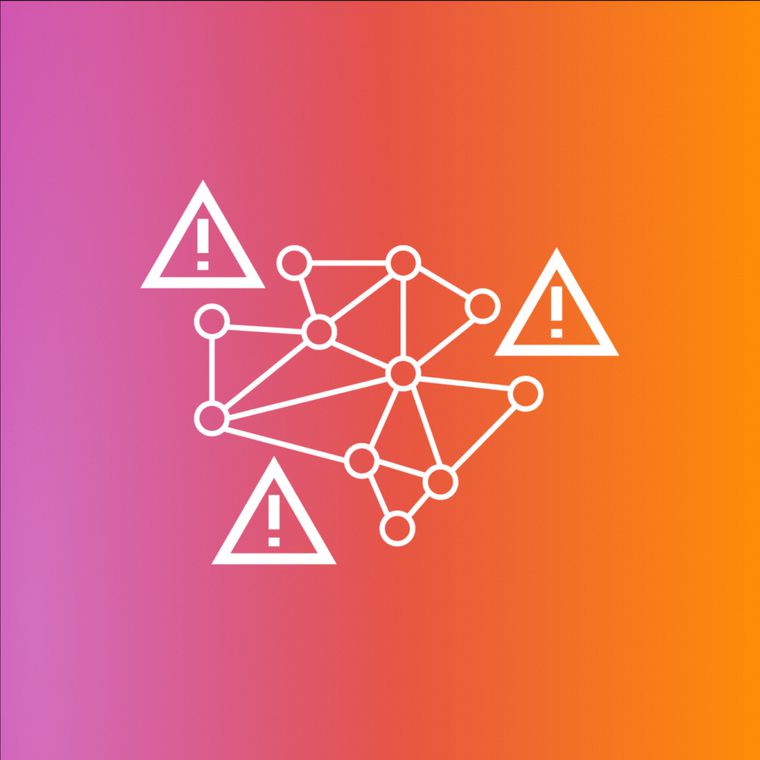Practical Guide to Setting Up 24/7 Cybersecurity Support
Build around-the-clock cyber defense without overloading your internal team or budget.
July 29, 2025
Attackers never clock out, so your defenses cannot either. After-hours breaches frequently begin on a single unsecured device, and endpoint security research shows that lateral movement can unfold in minutes, not hours, leaving little margin for delayed detection. Every hour a threat goes unnoticed amplifies legal exposure, recovery costs, and reputational damage.
A round-the-clock continuous monitoring provides the visibility and rapid response you need to trim mean time to detect and contain incidents before they disrupt revenue or violate compliance obligations. Yet the 2019 SANS SOC survey found that most teams still struggle to staff and sustain true 24/7 coverage.
This guide breaks down how to assemble the core components required for nonstop protection.
Core Components of an Effective 24/7 Security Operations Center
Effective 24/7 protection relies on a seamless combination of advanced tools, structured processes, and skilled personnel. Real-time monitoring platforms capture endpoint and network activity, forwarding alerts to analysts for immediate action. A centralized Security Information and Event Management (SIEM) system aggregates logs and threat intelligence, enabling a comprehensive view of attacker behavior.
Disciplined processes enhance technology effectiveness. Incident response playbooks, enriched with global threat intelligence, enable swift containment. Automated patch management reduces known vulnerabilities, while integrated remediation workflows cut response time and analyst fatigue.
To protect sensitive data, implement data loss prevention (DLP) and role-based access controls. When DLP alerts are integrated with identity-based behavioral analytics, your team can detect data exfiltration, even if perimeter defenses are bypassed.
Staffing Models: Building Your 24/7 Cybersecurity Team
Effective 24/7 coverage starts with a staffing model that balances continuous vigilance with analyst well-being. Building this foundation requires careful consideration of shift structures, team sizing, and role definitions.
Choosing Your Shift Structure
Three proven structures anchor most SOC schedules.
A classic three-shift rotation splits the day into equal eight-hour blocks, giving you predictable handoffs.
The four-shift model overlays 12-hour shifts with built-in overlap, easing peak-time pressure but demanding stricter fatigue monitoring.
A follow-the-sun design distributes teams across time zones so incidents never wait for morning, useful if you already operate global offices or subsidiaries.
Sizing and Structuring Your Team
Sizing the team requires pragmatic calculation. Gartner recommends dedicating 10–15 percent of your overall IT or information-security headcount to the SOC and scaling up when alert volume, regulatory scope, or asset count grows beyond original assumptions.
Role clarity underpins this ratio. Here’s how:
Tier 1 analysts need log-analysis skills and calm triage under pressure
Tier 2 analysts dig into root cause, threat intelligence, and containment
Tier 3 threat hunters script queries, orchestrate detections, and mentor juniors
A SOC manager drives strategy and escalation, while an automation engineer keeps SIEM and SOAR playbooks humming, the competencies outlined by security professionals.
Also, retention poses the silent risk. You need to reduce burnout by automating noisy alerts, rotating analysts through specialties, and funding certifications. These tactics are recognized for improving retention in many operations centers.
Sample SOC Structure
Below is a blueprint for a mid-size enterprise (roughly 2,000 employees) running an internal three-shift SOC:
1 SOC manager (day shift)
2 automation engineers (day shift, on-call)
9 Tier 1 analysts (three per shift)
6 Tier 2 analysts (two per shift)
2 Tier 3 hunters (weekday, on-call)
With clear shifts, defined career paths, and targeted automation, you can sustain true round-the-clock resilience without exhausting your talent.
Essential Tools and Technologies for Continuous Monitoring
The right technological infrastructure converts human expertise into automated threat detection and response. Effective 24/7 security coverage requires a cohesive platform delivering comprehensive visibility and automated incident response across your digital infrastructure. That said, the core technologies include:
Security Information and Event Management (SIEM): Modern SOCs need SIEM solutions that aggregate logs from cloud, network, and endpoint sources, correlating them in real-time to generate actionable alerts. This centralized hub reduces threat dwell time and streamlines compliance reporting.
Endpoint and Network Monitoring: Most breaches originate through workstations and servers, making endpoint telemetry critical for detecting suspicious activities and enabling rapid containment. Combined with network traffic analysis, this layered approach catches lateral movement that bypasses perimeter defenses.
Security Orchestration and Automated Response (SOAR): SOAR platforms manage alert volume by connecting security signals and executing predefined playbooks. They automatically handle routine incidents while escalating complex cases, allowing analysts to focus on proactive threat hunting.
Integration Architecture: Open APIs and shared data models ensure every component reinforces the others rather than operating in silos. Open-source alternatives provide budget-friendly options without sacrificing coverage.
Continuous security monitoring effectiveness depends on integrated technologies that amplify team capabilities. A connected ecosystem of SIEM, endpoint protection, and orchestration tools creates faster detection and more effective response to cyber threats.
Implementation Roadmap: From Standard Hours to 24/7
With your technology stack defined, the next challenge is orchestrating a smooth transition to continuous operations. Treat the transition to 24/7 coverage as a controlled, multi-phase project that balances technology, process, and people.
Here’s how you can go about it:
Start with a candid assessment of where you stand. Map every log source, alert channel, and escalation path, then compare that inventory to critical business assets. Most teams discover blind spots at this stage, from unmonitored SaaS workloads to endpoints missing an agent.
Next, codify response procedures. Use security operations guidelines to draft playbooks that spell out detection logic, containment actions, and escalation owners for your highest-risk scenarios. Treat these documents as living code and update them after every incident review.
- Post this, roll out coverage in phases that minimize business disruption. These phases include:
Phase 1: Extend monitoring to evenings by adding an on-call rotation while validating alert fidelity
Phase 2: Deploy full overnight coverage and integrate automation to suppress false positives
Phase 3: Add weekend and holiday shifts, completing true 24/7 operations
While you’re at it, technology upgrades should happen in parallel. Consolidate log streams into a SIEM, enable endpoint telemetry through an EDR platform, and connect both to a SOAR engine for automated enrichment. Prioritize integrations that share context bidirectionally since partial feeds create more noise than value.
Pair new analysts with experienced staff for knowledge transfer, and rotate them through daylight shifts before assigning solo overnight duties. Continuous training on detection tooling, reinforced by hands-on labs, counters skill atrophy.
Lastly, test every procedure before declaring success. Tabletop exercises, live-fire drills, and simulated phishing campaigns expose gaps, letting you refine alerts and playbooks without customer-impacting surprises. Only after repeated, error-free dry runs should you activate full 24/7 cybersecurity operations.
Outsourced and Hybrid SOC Models: Choosing Right
When planning your security operations, evaluate whether your internal team can meet your protection goals alone. Your decision should factor in your risk appetite, budget, and talent availability.
In-house SOCs give you full control over security processes and customization but demand significant investment in round-the-clock staff and technology. Fully outsourced SOCs reduce your operational burden but limit your visibility and direct response control. Hybrid models offer a middle ground where your internal team oversees critical systems while external providers handle after-hours monitoring and additional capacity during incidents.
Hybrid setups face integration hurdles from the start. When security data spreads across different platforms, it creates gaps in visibility and makes threat detection harder. Use unified dashboards and standardized connections to eliminate these blind spots. Strong coordination is crucial, create shared procedures, clear escalation rules, and measurable goals, then hold regular reviews with both teams to ensure alignment.
When choosing an external provider, demand continuous coverage with clear performance commitments, proven regulatory compliance experience, transparent response time reporting, and seamless integration with your current security tools. Include these requirements in your contract, track performance through shared monitoring, and maintain active oversight to benefit from expert support without losing control.
Measuring and Improving SOC Performance
No matter which SOC model you choose, success requires ongoing performance tracking. Focus on three areas: how quickly you detect threats, how accurately you respond, and how well you protect business operations. Use these measurements to continuously refine your security processes.
Start with time-based metrics that show where delays occur. Monitor how long it takes to detect threats and respond to incidents. If your times exceed industry standards, you need immediate improvements. Also track quality indicators like false positive rates, which show wasted effort, and useful threat intelligence rates, which confirm your security feeds provide real value.
Create a real-time dashboard that displays detection and response times by incident severity, resolution rates, how quickly vulnerabilities get fixed, and coverage across your systems and data. Give each shift leader responsibility for these metrics so team handoffs focus on fixing problems rather than just reporting status. After every major incident, spend 15 minutes capturing lessons learned, updating procedures, and improving automated responses. Small, regular changes work better than major quarterly reviews.
Every three months, connect your SOC metrics to your organization's main risk concerns. If ransomware is your biggest worry, prioritize monitoring file server activity above other metrics.
Test your improvements through simulated attacks and automated checks to ensure your numbers reflect real security strength, not just good reporting.
Aligning 24/7 Security Operations with Business Risk
Your security metrics only matter if they protect what's most important to your business. Here are the steps that you need to take for this:
Identify your most critical systems, customer databases, payment systems, and intellectual property, then rank them by potential financial damage and regulatory impact. This risk-based approach helps you choose which data to monitor, which alerts need immediate attention, and which responses to automate.
Get executive support by showing how your security work saves money. Track how incident prevention reduces downtime costs and regulatory fines. Present these results in monthly dashboards that connect security achievements to avoided revenue losses, making your value clear to business leaders.
Use smart technology to control costs while improving security. Automated workflows and threat analysis reduce manual work, freeing your analysts for more valuable threat hunting activities. Advanced analytics tools cut false alarms and focus human attention where expertise matters most.
Grow your SOC gradually by adding new data sources and staff in small steps as your company expands. Follow industry-proven staffing guidelines for these decisions. Automation and smart analytics help you maintain strong protection without costs rising at the same rate as your growth.
Strengthening 24/7 Security Operations with Abnormal
Building effective, always-on security operations requires the right tools, skilled personnel, and strategic alignment with business goals. Key success factors include integrating advanced monitoring systems, automating routine alert handling, and ensuring your security strategy supports broader organizational priorities.
Abnormal enhances your ability to meet these challenges. Its AI-driven email security platform uses behavioral analytics to detect anomalies in real time, significantly improving threat detection accuracy while reducing false positives. By automating threat identification and response, Abnormal empowers your analysts to focus on high-impact investigations rather than chasing low-value alerts.
As security operations evolve, Abnormal supports your journey with seamless integration into Microsoft 365 and Google Workspace, compliance-aligned reporting, and adaptive protection that scales with your organization. Start by identifying current gaps in visibility or threat response, then use Abnormal’s intelligent platform to support a phased, strategic approach to continuous security operations.
To maintain resilient defenses and support business growth, choose a solution built for the future backed by Abnormal’s innovation and expertise. Book a personalized demo to learn more.
Related Posts
Get the Latest Email Security Insights
Subscribe to our newsletter to receive updates on the latest attacks and new trends in the email threat landscape.


